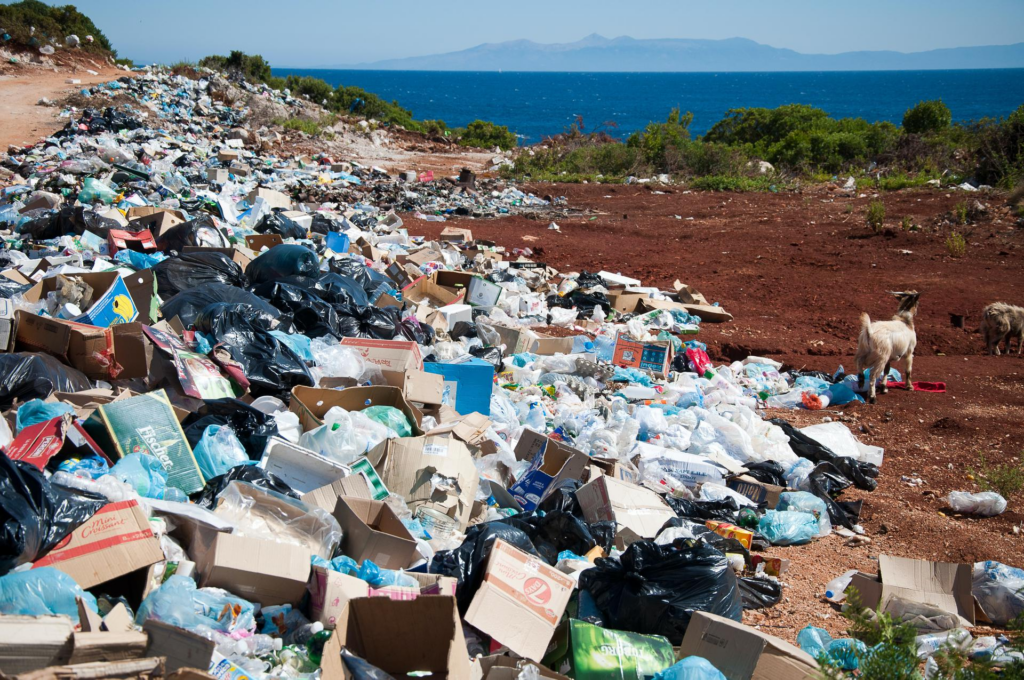05 November 2022 | Climate Tech
Sorting and eating trash
By
Plastic recycling is much maligned, at least in the U.S. A dismal Greenpeace report came out last week, stating that 5-6% of plastic in the U.
The truth is a bit more complicated. A number of other reports this year have argued that plastic recycling is working better than reports like the one from Greenpeace would lead you to believe.
Regardless, recycling isn’t as easy as putting the right item in the right bin. Why is it so hard? For one, there are many different types of plastic, some of which are easier to recycle than others. For instance, plastic water bottles, while unnecessary in many cases, are recycled pretty readily compared to other things, like, say, the plastic in appliances.
Another factor we’ve explored recently is the size of materials. Materials recovery and sorting facilities in the U.S. typically aren’t set up to sort and recycle small items, say, those less than 2-3 inches in size in any direction. This speaks to a topic I explored with Nick Gardner and Madison Savilow on a recent podcast episode, namely that, unlike recycling lithium, there hasn’t traditionally been as much money in plastics recycling. Plastic is cheap and easy to make (with fossil fuels), especially absent stringent environmental regulations. Hence, recycling efforts weren’t always a priority.

Now there is demand for recycled plastic. Both from companies that want to use recycled or recovered plastics for sustainability goals and regulators who don’t want more plastics in landfills or the ocean.
And as a result, among the normal wave of fundraising announcements for EV charging companies, we saw some high-profile raises in the plastic recycling space this week:
- Amp Robotics raised a $91M Series C for its recycling sorting robots
- Samsara Eco raised a ~$34M Series A to use enzyme-based recycling technology
- Protein Evolution came out of stealth with $23M in funding to also use enzymes to break down textiles and plastic waste
The largest and most senior company of the three, Amp Robotics, focuses on improving existing recycling systems and facilities. Their machines replace or supplement those in existing materials recovery facilities (“MRFs”) to improve sorting. The AI-driven system can allegedly sort up to 80 items per minute with up to 99% accuracy. Incidentally, they don’t just work with plastics; they work with electronics, paper, organic waste, and more. And they’ve already achieved proof of concept at facilities in the U.S., doubling plastic recovery in one Ohio facility. So the name of the game with their Series C will be further scale.
Samsara and Protein Evolution, meanwhile, are up to something different. Both companies envision using microbes with special plastic-devouring characteristics. Protein Evolution’s story starts with discovering a plastic-devouring enzyme in a Japanese garbage heap in 2016. It turns out that if you flood the world with enough plastic, at some point, some mutation will create a microbe that wants to eat it! Protein Evolution focuses on accelerating the evolution of this enzyme by selecting the most effective mutations so it can break down plastics and turn it into valuable chemicals..
Samsara’s story is similar. In their words, they’ve created “plastic-eating super enzymes that break plastic back down to its core molecules.” Whether Samsara and Protein Evolution are working with similar or completely different enzymes is something I’m curious about. Even if it’s the same enzyme, there’s nothing wrong with two companies racing to improve the same ‘technology’ (see, for instance, all the companies chasing nuclear fusion).
The net-net
While promising, even if they worked well at scale, the new enzyme technologies will require rerouting massive quantities of plastics to new facilities. The conditions need to be moderately controlled, too, i.e., I assume the enzymes won’t just be released into landfills to wreak havoc. While that sounds cool, it also sounds like the start of a horror movie. You come back two weeks later, and the enzymes are working their way through parking lots, eating all the plastic in cars.
I’m more excited about AMP Robotics’ solution for its short-term ability to plug into existing MRFs; that’s a big opportunity area. That said, as another podcast host of mine recently articulated, we should be “gleefully banging on all the keys,” an analogy for taking every possible shot on goal with respect to different climate solutions.
Zooming out, while plastics are much maligned for their environmental impact, you could say the same about steel and concrete, which are also everywhere and have a significant emissions footprint. When thinking about these topics, I always like to reflect on how core these materials are to society. Next time you want to lament plastics, consider medical devices and PPE for hospital workers. That’s primarily plastic. Until we re-engineer everything from how and what the materials are made of to what happens to them at their end of life, pollution problems will persist. These are all-encompassing challenges.